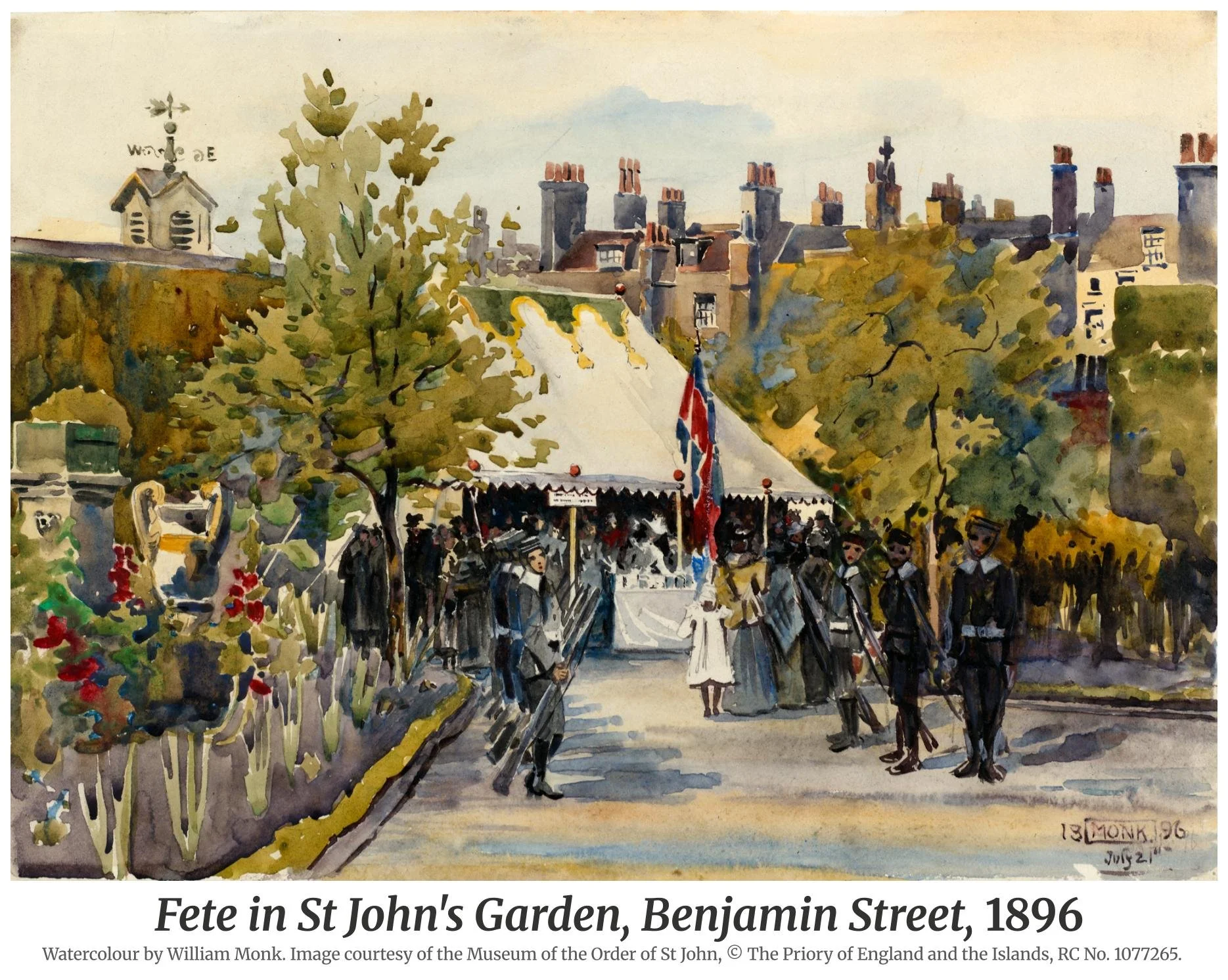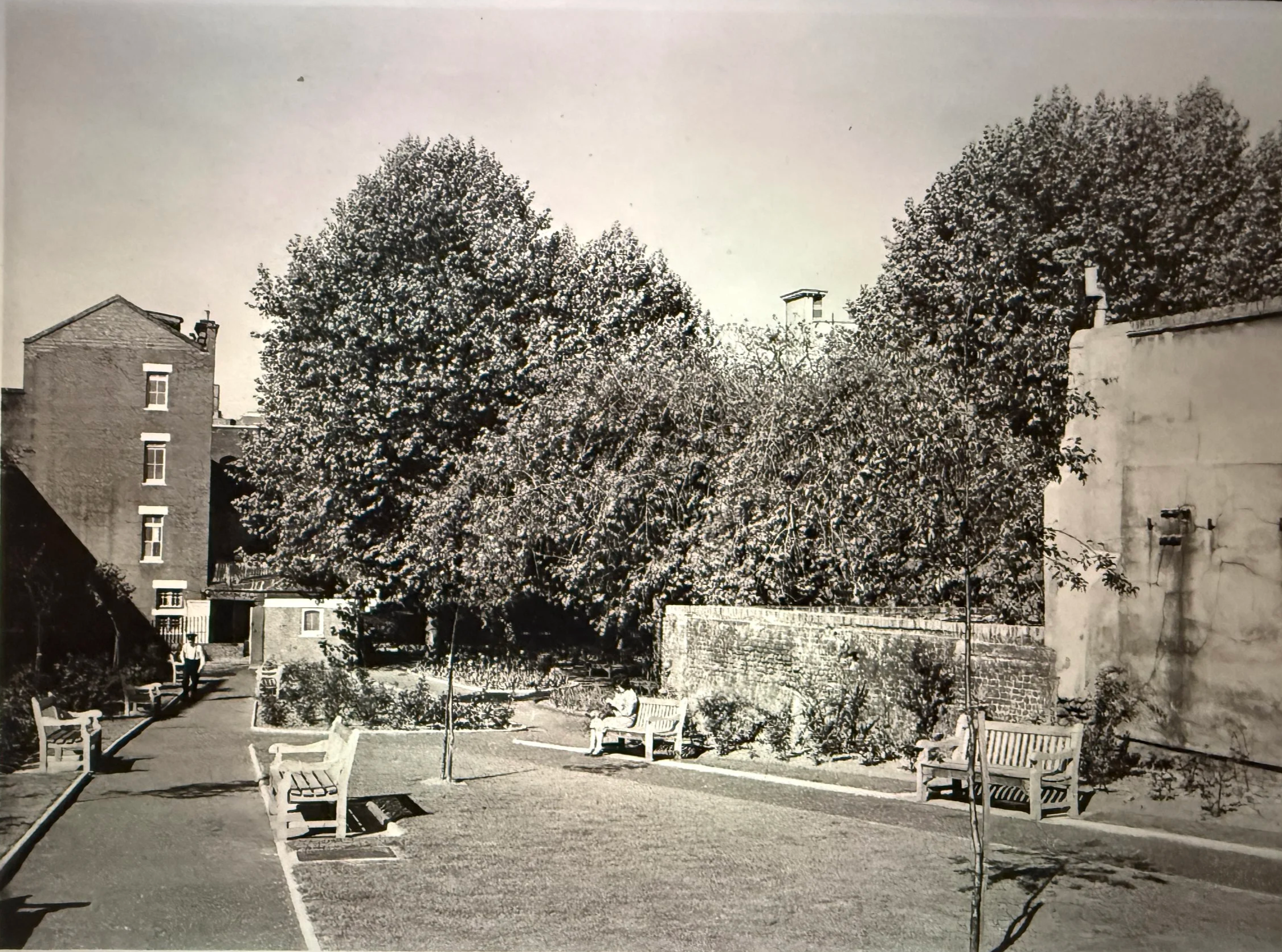The History of St John’s Garden
In Medieval London, the site where St John’s Garden stands today was part of the outer precinct of the Order of St John’s Priory, situated at the end of Garden Alley and likely used as a kitchen garden.
In 1840, following the Dissolution of the Priory by Henry VIII, the site fell into private hands along with the surrounding land, and remained so until the 1750s, when it was bequeathed to the Church of St John Clerkenwell as an overflow burial ground.
A century later, it was closed following the 1853 Burial Acts and fell into disrepair, becoming a ‘sort of waste ground on which pots and pans, and refuse of all kinds, were flung from the neighbouring houses’ (Revd William Dawson, 1885).
It was transformed into a public garden by the Metropolitan Public Garden Association in 1884, to provide ‘a nook of greenery in this dingy and squalid part of London, where the workman may smoke his pipe in the dinner hour, and the old and feeble folk rest and chat in the summer sunshine, drinking in some little light and sweetness in this hallowed spot’ (Revd William Dawson, 1885).
The bodies were exhumed and removed to Brookwood Cemetery, Woking, via the London Necropolis Railway in 1894 (John M. Clarke, 2006). Booths Gin Distillery towered over the Garden for much of the 20th century, and the enclosed green space was expanded and opened up in the 1970s following post-war demolition and development of neighbouring buildings.
Today, the Garden is a Site of Importance for Nature and Conservation, and plays a vital role in supporting people, plants and wildlife populations across the neighbourhood.
Photograph taken September, 1975. Historic England Archive.



